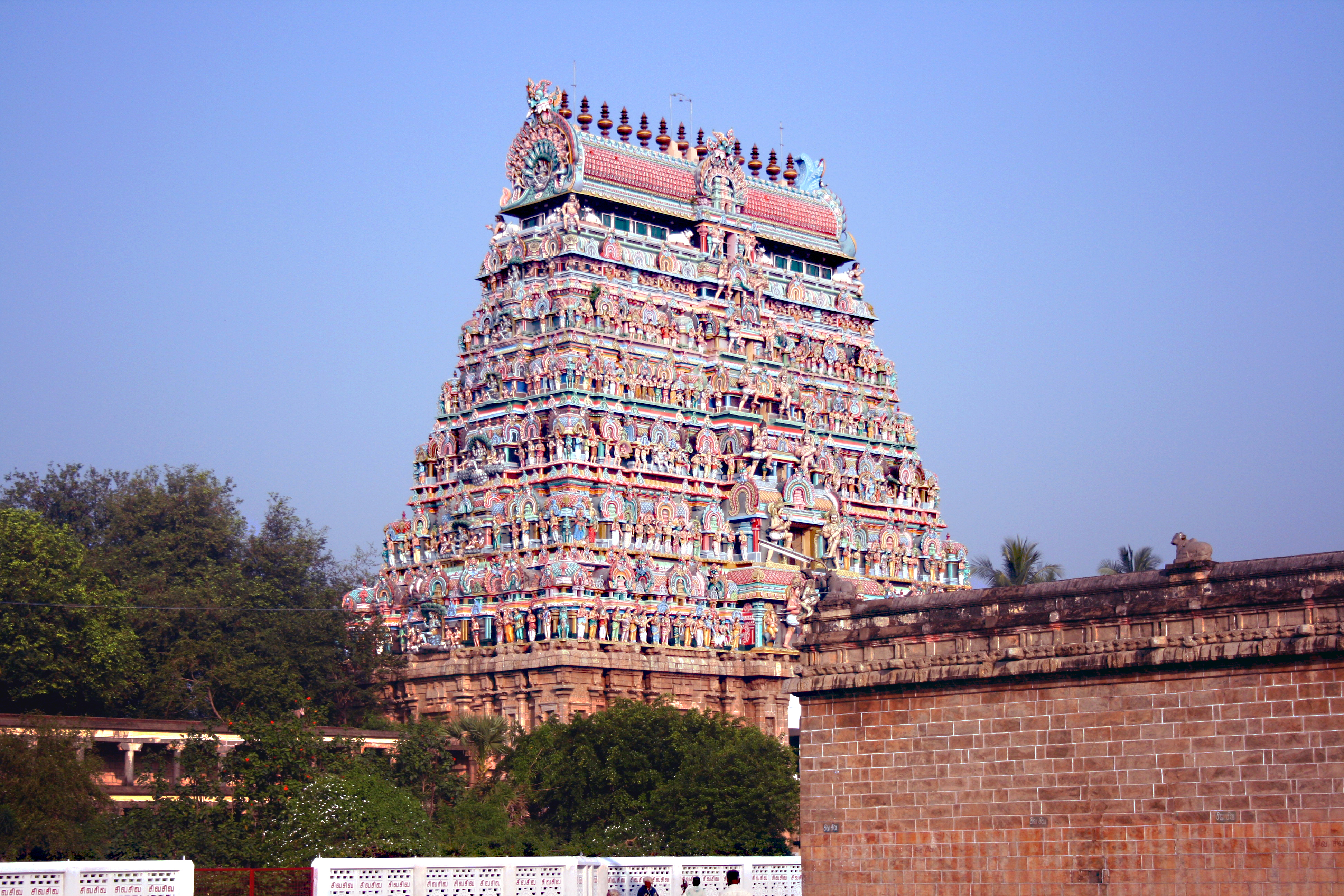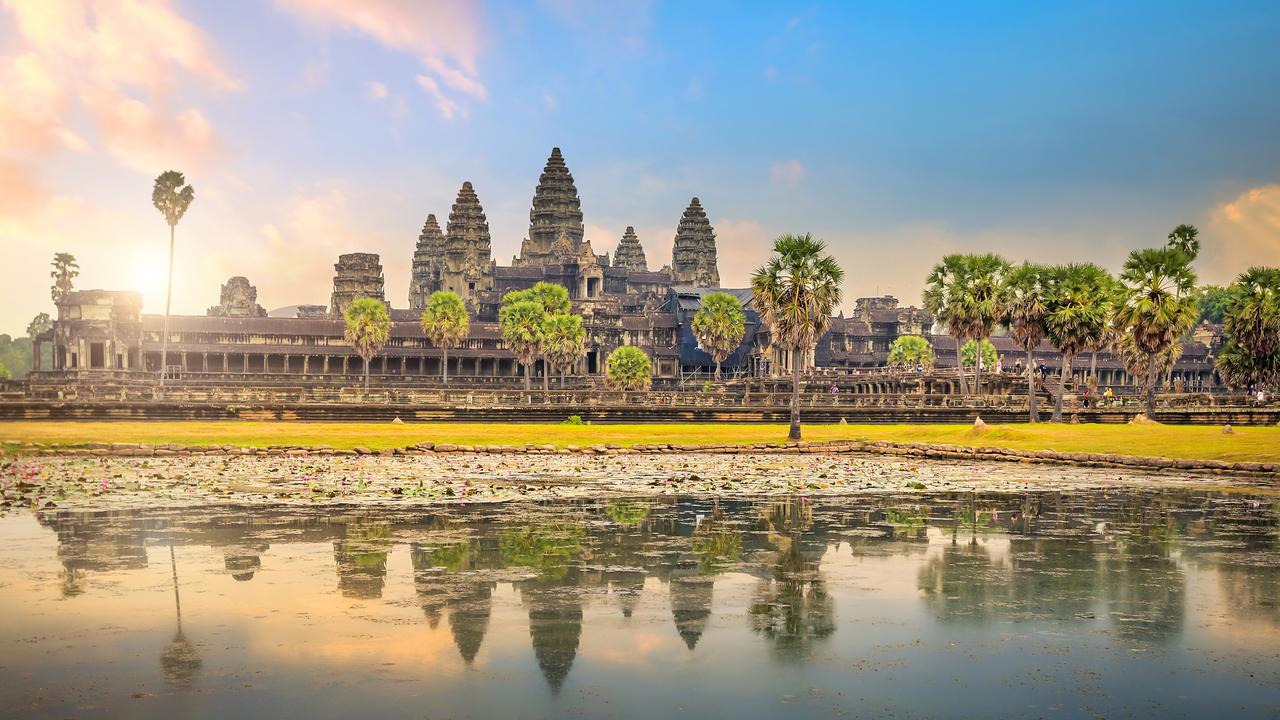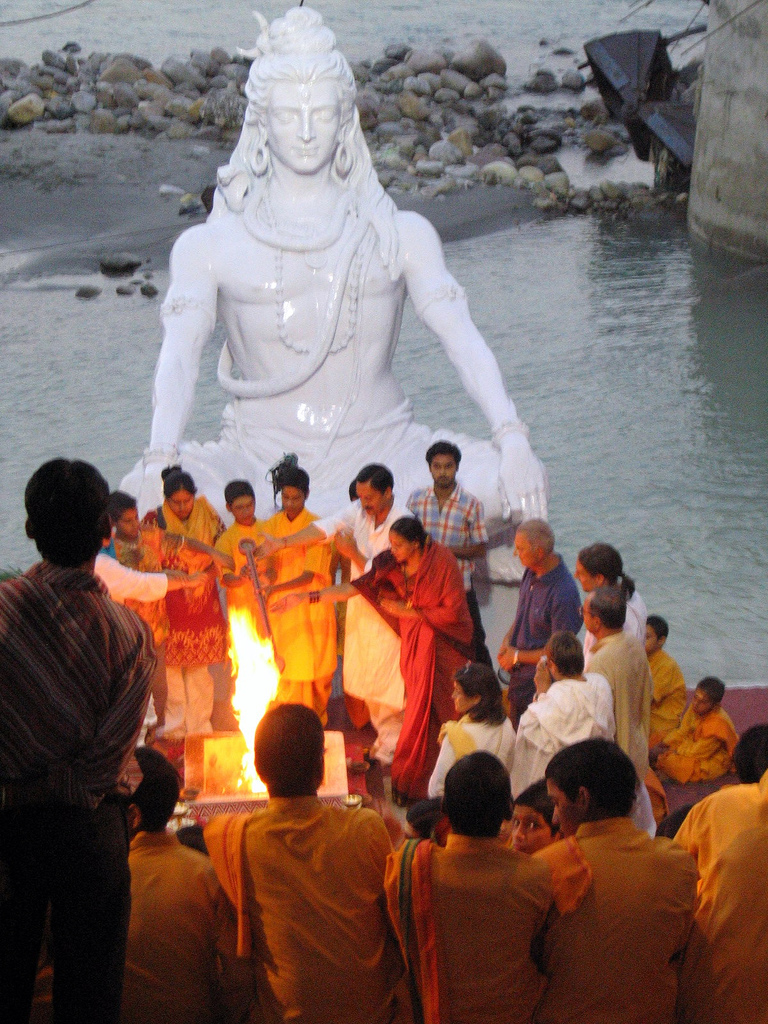|
Aiyadigal Kadavarkon Nayanar
Aiyadigal Kadavarkon, was a ruler of the kadava dynasty and was ruling from Kanchipuram. Later he became the 46th Nayanar Saint in Tamil Nadu. Explanation of Name According to Sujit Mukherjee the saint king appears to have been a Pallava King, Simma Varman (c. 550–575). The ''Encyclopedia of Saivism'' identifies the term ''Kadavar'' with Pallava dynasty and the Tamil term ''kon'' as king. Efficient Ruler Kanchipuram, the capital of Pallavas is known as the city of active power. The king Aiyadigal Kadavarkon worshiped Shiva with faith and devotion and ruled his kingdom with his royal stick of justice i.e., the Justice of Shiva. As a brave warrior and courageous king, he protected the Shiva and other Hindu temples and cared his land and people and infused the spirit of Saivism into their minds. The king was fluent in Tamil and Sanskrit languages and his knowledge of Tamil and Sanskrit has been the source of Tamil hymns on Shiva. Pilgrimage The king found that ruling the c ... [...More Info...] [...Related Items...] OR: [Wikipedia] [Google] [Baidu] |
Hinduism
Hinduism () is an Indian religion or ''dharma'', a religious and universal order or way of life by which followers abide. As a religion, it is the world's third-largest, with over 1.2–1.35 billion followers, or 15–16% of the global population, known as Hindus. The word ''Hindu'' is an exonym, and while Hinduism has been called the oldest religion in the world, many practitioners refer to their religion as '' Sanātana Dharma'' ( sa, सनातन धर्म, lit='the Eternal Dharma'), a modern usage, which refers to the idea that its origins lie beyond human history, as revealed in the Hindu texts. Another endonym is ''Vaidika dharma'', the dharma related to the Vedas. Hinduism is a diverse system of thought marked by a range of philosophies and shared concepts, rituals, cosmological systems, pilgrimage sites, and shared textual sources that discuss theology, metaphysics, mythology, Vedic yajna, yoga, agamic rituals, and temple building, among other topi ... [...More Info...] [...Related Items...] OR: [Wikipedia] [Google] [Baidu] |
Tamil Language
Tamil (; ' , ) is a Dravidian language natively spoken by the Tamil people of South Asia. Tamil is an official language of the Indian state of Tamil Nadu, the sovereign nations of Sri Lanka and Singapore, and the Indian territory of Puducherry (union territory), Puducherry. Tamil is also spoken by significant minorities in the four other South Indian states of Kerala, Karnataka, Andhra Pradesh and Telangana, and the Union Territory of the Andaman and Nicobar Islands. It is also spoken by the Tamil diaspora found in many countries, including Malaysian Tamil, Malaysia, Myanmar Tamils, Myanmar, Tamil South Africans, South Africa, British Tamils, United Kingdom, Tamil Americans, United States, Tamil Canadians, Canada, Tamil Australians, Australia and Tamil Mauritians, Mauritius. Tamil is also natively spoken by Sri Lankan Moors. One of 22 scheduled languages in the Constitution of India, Tamil was the first to be classified as a Languages of India, classical language of India ... [...More Info...] [...Related Items...] OR: [Wikipedia] [Google] [Baidu] |
Thillai Nataraja Temple, Chidambaram
Thillai Nataraja Temple, also referred as the Chidambaram Nataraja Temple, is a Hindu temple dedicated to Nataraja, the form of Shiva as the lord of dance. This temple is located in Chidambaram, Tamil Nadu, India. This temple has ancient roots and a Shiva shrine existed at the site when the town was known as Thillai. Pal 1988, p. 19 Chidambaram, the name of the city literally means "stage of consciousness". The temple architecture symbolizes the connection between the arts and spirituality, creative activity and the divine.Chidambaram Encyclopædia Britannica The temple wall carvings display all the 108 karanas from the '''' by Bharata Muni, and these postures form a foundation of |
Temple
A temple (from the Latin ) is a building reserved for spiritual rituals and activities such as prayer and sacrifice. Religions which erect temples include Christianity (whose temples are typically called church (building), churches), Hinduism (whose temples are called Mandir), Buddhism, Sikhism (whose temples are called Gurdwara, gurudwara), Jainism (whose temples are sometimes called derasar), Islam (whose temples are called mosques), Judaism (whose temples are called synagogues), Zoroastrianism (whose temples are sometimes called Agiary), the Baha'i Faith (which are often simply referred to as Baha'i House of Worship), Taoism (which are sometimes called Daoguan), Shinto (which are sometimes called Shinto shrine, Jinja), Confucianism (which are sometimes called the Temple of Confucius), and ancient religions such as the Ancient Egyptian religion and the Ancient Greek religion. The form and function of temples are thus very variable, though they are often considered by belie ... [...More Info...] [...Related Items...] OR: [Wikipedia] [Google] [Baidu] |
Saivite
Shaivism (; sa, शैवसम्प्रदायः, Śaivasampradāyaḥ) is one of the major Hindu denominations, Hindu traditions, which worships Shiva as the God, Supreme Being. One of the largest Hindu denominations, it incorporates many sub-traditions ranging from devotional Dualistic cosmology#Theistic dualism, dualistic theism such as Shaiva Siddhanta to yoga-orientated monism, monistic non-theism such as Kashmiri Shaivism.Ganesh Tagare (2002), The Pratyabhijñā Philosophy, Motilal Banarsidass, , pages 16–19 It considers both the Vedas and the Āgama (Hinduism), Agama texts as important sources of theology.Mariasusai Dhavamony (1999), Hindu Spirituality, Gregorian University and Biblical Press, , pages 31–34 with footnotesMark Dyczkowski (1989), The Canon of the Śaivāgama, Motilal Banarsidass, , pages 43–44 Shaivism developed as an amalgam of pre-Vedic religions and traditions derived from the southern Tamils, Tamil Shaiva Siddhanta traditions and philosop ... [...More Info...] [...Related Items...] OR: [Wikipedia] [Google] [Baidu] |
Country
A country is a distinct part of the world, such as a state, nation, or other political entity. It may be a sovereign state or make up one part of a larger state. For example, the country of Japan is an independent, sovereign state, while the country of Wales is a component of a multi-part sovereign state, the United Kingdom. A country may be a historically sovereign area (such as Korea), a currently sovereign territory with a unified government (such as Senegal), or a non-sovereign geographic region associated with certain distinct political, ethnic, or cultural characteristics (such as the Basque Country). The definition and usage of the word "country" is flexible and has changed over time. '' The Economist'' wrote in 2010 that "any attempt to find a clear definition of a country soon runs into a thicket of exceptions and anomalies." Most sovereign states, but not all countries, are members of the United Nations. The largest country by area is Russia, while the ... [...More Info...] [...Related Items...] OR: [Wikipedia] [Google] [Baidu] |
Hymns
A hymn is a type of song, and partially synonymous with devotional song, specifically written for the purpose of adoration or prayer, and typically addressed to a deity or deities, or to a prominent figure or personification. The word ''hymn'' derives from Greek (''hymnos''), which means "a song of praise". A writer of hymns is known as a hymnist. The singing or composition of hymns is called hymnody. Collections of hymns are known as hymnals or hymn books. Hymns may or may not include instrumental accompaniment. Although most familiar to speakers of English in the context of Christianity, hymns are also a fixture of other world religions, especially on the Indian subcontinent ('' stotras''). Hymns also survive from antiquity, especially from Egyptian and Greek cultures. Some of the oldest surviving examples of notated music are hymns with Greek texts. Origins Ancient Eastern hymns include the Egyptian ''Great Hymn to the Aten'', composed by Pharaoh Akhenaten; the Hurrian ' ... [...More Info...] [...Related Items...] OR: [Wikipedia] [Google] [Baidu] |
Sanskrit
Sanskrit (; attributively , ; nominalization, nominally , , ) is a classical language belonging to the Indo-Aryan languages, Indo-Aryan branch of the Indo-European languages. It arose in South Asia after its predecessor languages had Trans-cultural diffusion, diffused there from the northwest in the late Bronze Age#South Asia, Bronze Age. Sanskrit is the sacred language of Hinduism, the language of classical Hindu philosophy, and of historical texts of Buddhism and Jainism. It was a lingua franca, link language in ancient and medieval South Asia, and upon transmission of Hindu and Buddhist culture to Southeast Asia, East Asia and Central Asia in the early medieval era, it became a language of religion and high culture, and of the political elites in some of these regions. As a result, Sanskrit had a lasting impact on the languages of South Asia, Southeast Asia and East Asia, especially in their formal and learned vocabularies. Sanskrit generally connotes several Indo-Aryan lang ... [...More Info...] [...Related Items...] OR: [Wikipedia] [Google] [Baidu] |
Saivism
Shaivism (; sa, शैवसम्प्रदायः, Śaivasampradāyaḥ) is one of the major Hindu traditions, which worships Shiva as the Supreme Being. One of the largest Hindu denominations, it incorporates many sub-traditions ranging from devotional dualistic theism such as Shaiva Siddhanta to yoga-orientated monistic non-theism such as Kashmiri Shaivism.Ganesh Tagare (2002), The Pratyabhijñā Philosophy, Motilal Banarsidass, , pages 16–19 It considers both the Vedas and the Agama texts as important sources of theology.Mariasusai Dhavamony (1999), Hindu Spirituality, Gregorian University and Biblical Press, , pages 31–34 with footnotesMark Dyczkowski (1989), The Canon of the Śaivāgama, Motilal Banarsidass, , pages 43–44 Shaivism developed as an amalgam of pre-Vedic religions and traditions derived from the southern Tamil Shaiva Siddhanta traditions and philosophies, which were assimilated in the non-Vedic Shiva-tradition. In the process of Sanskritisat ... [...More Info...] [...Related Items...] OR: [Wikipedia] [Google] [Baidu] |
Hindu Temple
A Hindu temple, or ''mandir'' or ''koil'' in Indian languages, is a house, seat and body of divinity for Hindus. It is a structure designed to bring human beings and gods together through worship, sacrifice, and devotion.; Quote: "The Hindu temple is designed to bring about contact between man and the gods" (...) "The architecture of the Hindu temple symbolically represents this quest by setting out to dissolve the boundaries between man and the divine". The symbolism and structure of a Hindu temple are rooted in Vedic traditions, deploying circles and squares. It also represents recursion and the representation of the equivalence of the macrocosm and the microcosm by astronomical numbers, and by "specific alignments related to the geography of the place and the presumed linkages of the deity and the patron". A temple incorporates all elements of the Hindu cosmos — presenting the good, the evil and the human, as well as the elements of the Hindu sense of cyclic time and ... [...More Info...] [...Related Items...] OR: [Wikipedia] [Google] [Baidu] |
Shiva
Shiva (; sa, शिव, lit=The Auspicious One, Śiva ), also known as Mahadeva (; ɐɦaːd̪eːʋɐ, or Hara, is one of the principal deities of Hinduism. He is the Supreme Being in Shaivism, one of the major traditions within Hinduism. Shiva is known as "The Destroyer" within the Trimurti, the Hindu trinity which also includes Brahma and Vishnu. In the Shaivite tradition, Shiva is the Supreme Lord who creates, protects and transforms the universe. In the goddess-oriented Shakta tradition, the Supreme Goddess ( Devi) is regarded as the energy and creative power (Shakti) and the equal complementary partner of Shiva. Shiva is one of the five equivalent deities in Panchayatana puja of the Smarta tradition of Hinduism. Shiva has many aspects, benevolent as well as fearsome. In benevolent aspects, he is depicted as an omniscient Yogi who lives an ascetic life on Mount Kailash as well as a householder with his wife Parvati and his three children, Ganesha, Ka ... [...More Info...] [...Related Items...] OR: [Wikipedia] [Google] [Baidu] |
Kadava Dynasty
Kadava was the name of a Tamil ruling dynasty who ruled parts of the Tamil country during the thirteenth and the fourteenth century. Kadavas were related to the Pallava dynasty and ruled from Kudalur near Cuddalore in Tamil Nadu. Hiranyavarman, the father of Nandivarman II Pallavamalla is said to have belonged to the Kadavakula in epigraphs. Nandivarman II himself is described as "one who was born to raise the prestige of the Kadava family". Chiefs bearing the Kadava title figure as feudatories of the Cholas as early as the 12th century. During the reign of Kulothunga Chola II, there was a vassal called Alappirandan Elisaimohan alias Kulottungasola Kadavaradittan. The Kadava kingdom was at the height of their power briefly during the reigns of Kopperunchinga I and Kopperunchinga II. These two rulers were powerful enough to challenge the waning Chola dynasty during the reign of Rajaraja Chola III and Rajendra Chola III. The two Kopperunchingas have left a large number of inscrip ... [...More Info...] [...Related Items...] OR: [Wikipedia] [Google] [Baidu] |








